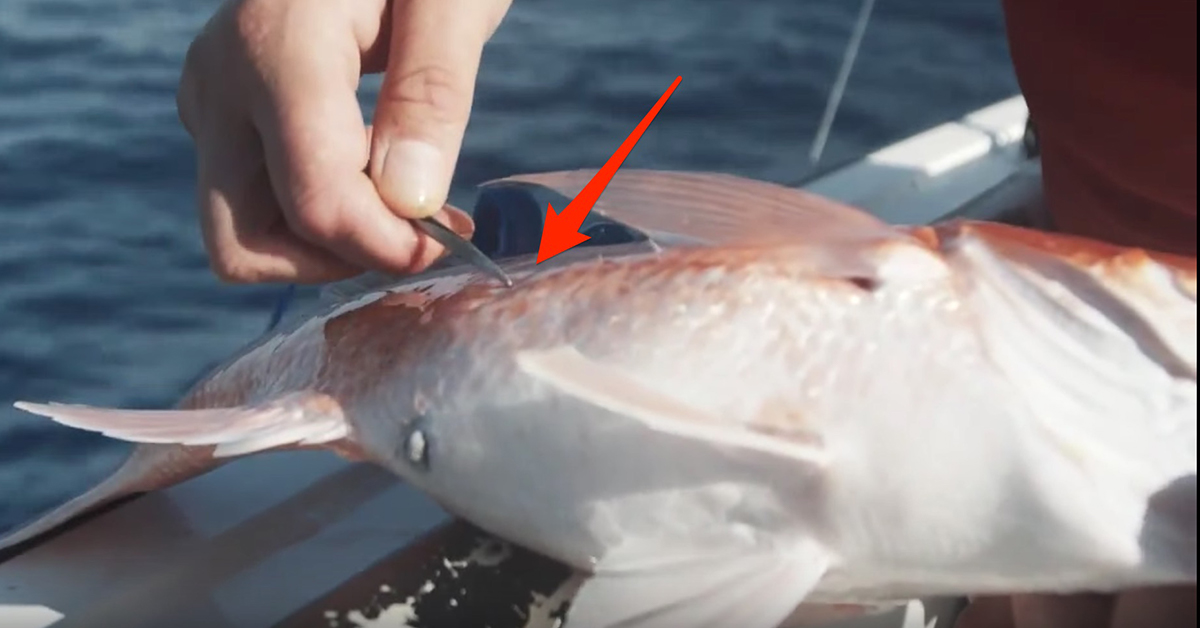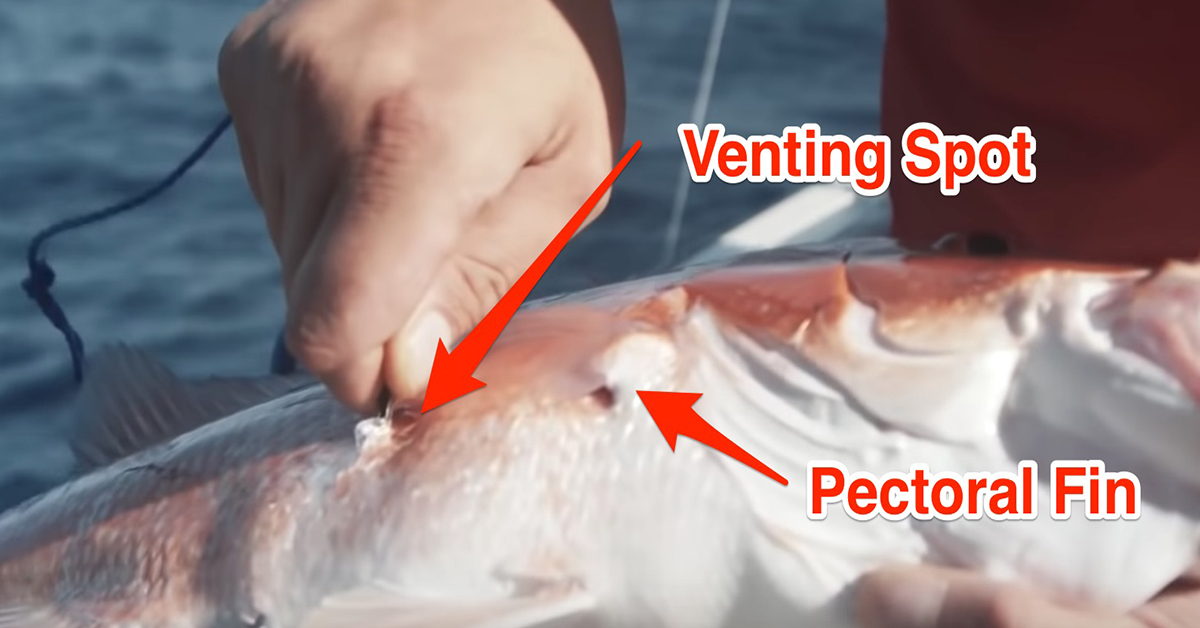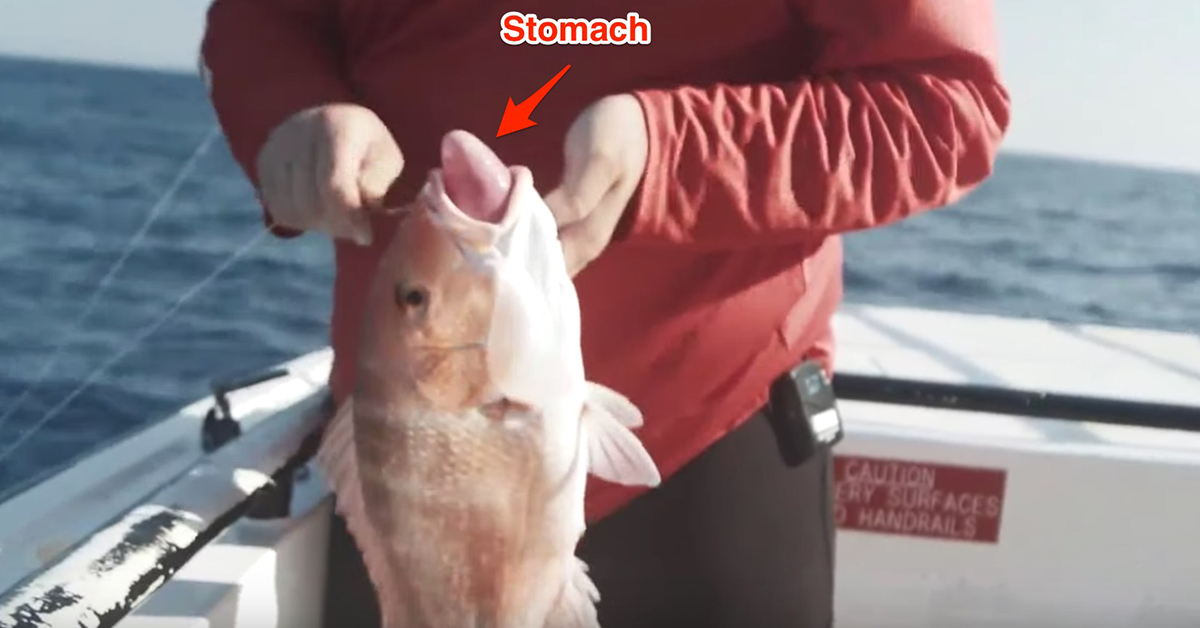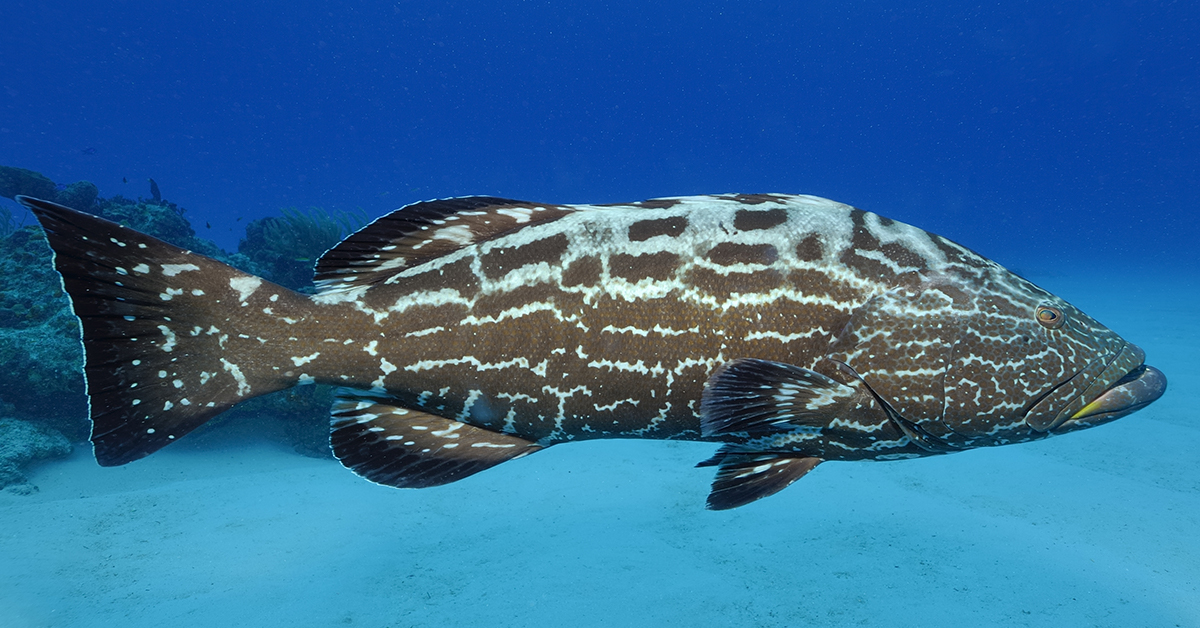How to Vent Snapper, Grouper and Bottom Fish [With Capt. Dylan Hubbard]
- By: Dylan Hubbard
- on
- Found In: Fishing Tips, Offshore Fishing, Other

One of the most critical things to know how to do when offshore fishing is how to properly vent grouper, snapper and other bottom fish in order to release them safely.
This skill is necessary to properly release undersized and out-of-season fish. It’s also important to ensure that we manage our reef fish populations in the best manner possible.
So what does it mean to “vent” a fish?
When bottom fish are pulled up from sizable depths around 30 feet or more, their swim bladders — which control buoyancy and help fish maintain their position in the water column — expand with gases. This can cause their stomachs and intestines to protrude from their orifices.
In this condition, the fish cannot swim back to the bottom due to their expanded swim bladder. They frequently die from stress, exposure to the elements and by being an easy meal for other predators. This is known as barotrauma.
Venting is the process used to release the gases in the fish’s swim bladder. This allows the fish to swim back to the bottom to a safer environment.
In this article, we go over how to properly vent a fish experiencing barotrauma, common fish venting mistakes and what fish species need to be vented.
How to Vent A Fish

Once you’ve hooked your fish and gotten it to the surface, it should be fairly simple to determine whether your fish is experiencing barotrauma.
Is the fish bloated and floating on the surface? Are its’ eyes bulging? Is it’s stomach sticking out of its’ mouth? Are the intestines sticking out of the back?
Answering yes to these questions is an indication that your fish needs to be vented before being released.
Time is of the essence once you determine a fish needs to be vented.
Venting Your Fish
First, try to get the fish on board quickly with as little handling of the fish as possible.
Next, find a good spot on the boat such as a bait cutting board or cooler to rest the fish on. Some people like to put a wet towel down in the resting spot for better stability and to keep the fish wet. Hold your fish gently but firmly in place here.
Once you have done this, you are ready to vent your fish.
To vent the fish, start at the base of the pectoral fin and move about one to two inches behind the base with your finger. Lift the fish’s scale and make an insertion at a 45-degree angle through the fish’s skin using a sharp object such as a venting tool or specialized needle.
Most venting tools are large-gauge hollow needles that allow gasses to escape through their chambers. Team Marine and Ohero both make good specialized venting tools that are inexpensive and high-quality.
Tip: When using a venting tool or any sharp object intended on venting or puncturing the fish, use your thumb and forefinger as a guard to stop the venting tool or object from puncturing the fish too deeply. Until you get more experienced at venting properly, it really only takes a minimal puncture to release excess gasses.
Puncturing the fish in this spot should create a hole in the fish’s swim bladder that allows the trapped gases to escape. If done correctly, you should hear the gases releasing in a similar sound to letting air out a ball or bike tire.
Note: it’s very important not to insert your object too far into the swim bladder as too deep of a puncture could hit other vital organs causing injury to the fish and even death.
Once you have released the air from the swim bladder, the fish is ready to go back in the water and back to the bottom to its’ happy dwelling.
The Most Common Fish Venting Mistakes

Many anglers make mistakes when venting which can cause injury and death to the fish. Some of the most common problems are easily avoidable if you know the proper techniques listed above. Some of the most common fish venting mistakes include the following:
- Puncturing the Stomach – Many anglers mistakenly identify the fish’s protruding stomach as its’ swim bladder. They puncture the stomach thinking they are properly releasing the gases keeping the fish afloat. This is not an effective means of venting the fish and will almost always result in further harm to it.
- Pushing the Stomach Back in – Some anglers may try to push the fish’s stomach back inside the fish. This can be dangerous for the fish and may cause additional stress to its’ internal organs. Always remember that it is not necessary to alter the position of the fish’s stomach. The fish’s organs will return to a normal position in a couple of hours after being released.
- Venting Fish that Don’t Need to be Vented – Not all bottom fish need to be vented, especially fish that are caught in depths of less than 30 feet. Venting these fish causes unnecessary injury, so always be sure the fish you’re venting has an expanded swim bladder before doing so.
- Puncturing the Fish too Deep – We touched on it in the last section but making a puncture too deep in the swim bladder can cause damage to the fish which can result in death.
- Taking too Long and Handling the Fish too Much – This is a general rule for all fishing. Handling fish with dry hands and keeping it out of the water for too long can doom it quickly. Always make sure to vent your fish quickly and to handle it as little as possible, always using wet hands. Proper dehooking is also critical and using a dehooker tool will speed up how long it takes to get your fish vented and back in the water with the least amount of damage possible.
You can keep fish healthy and release them to grow bigger, spawn and be caught again in the future by avoiding these mistakes!
Fish Species that Require Venting

Many bottom-dwelling fish do not have swim bladders and do not require venting when pulled up from the bottom. Fish such as cobia, sharks, kingfish, swordfish and many other species can move about different depths with no adverse effects whatsoever.
Many popular bottom fishing species do have swim bladders and will require venting when caught from certain depths. These species include:
- Grouper
- Snapper
- Black Sea Bass
- Amberjack
- Triggerfish
- Snook
You can prepare for a day of fishing by knowing that you will need to vent fish caught in certain depths. If you know you’re going to be fishing in depths greater than 30 feet, it is important to be ready with the equipment you need to vent any out-of-season or undersized fish you catch experiencing barotrauma.
How to Catch and Vent a Fish Video Tutorial
In the video below, I show you how to catch a red snapper off the bottom and how to properly vent and release it.
See the tutorial here:
Learn More About The Insider Fishing Club
Conclusion
Many reef species such as grouper and snapper require venting to relieve symptoms of barotrauma.
You can do your part in conserving these vital reef fish populations by keeping the necessary tools on your boat to vent fish.
Remember to look for signs that indicate barotrauma and to avoid the mistakes we identified.
If you have any comments or questions about barotrauma or venting fish, let us know in the comments below:
Tight Lines!
Related Posts:
1. Bottom Fishing For Grouper – Tips & Lessons (Podcast)
2. How To Make A Grouper Rig That Saves Money, Time, & Marine Life
3. The Best Way To Cook Grouper [10 Amazing Grouper Recipes]
Related Course:
Then you’ve got to see this private fishing club! Here’s what you’ll receive today:Do YOU Want to Catch More Fish this Summer?
Click here to join today.
Related categories:
STOP WASTING TIME ON THE WATER!
Do what the “SMART ANGLERS” are doing and join the Insider Club.
Here’s what you’ll receive today when you join:
- Weekly fishing reports and TRENDS revealing exactly where you should fish ever trip
- Weekly “spot dissection” videos that walk you through all the best spots in your area
- Exclusive fishing tips from the PROS you can’t find anywhere else
- Everything you need to start catching fish more consistently (regardless if you fish out of a boat, kayak, or land).
STOP WASTING TIME ON THE WATER!
Do what the “SMART ANGLERS” are doing and join the Insider Club.
Here’s what you’ll receive today when you join:
- Weekly fishing reports and TRENDS revealing exactly where you should fish every trip
- Weekly “spot dissection” videos that walk you through all the best spots in your area
- Exclusive fishing tips from the PROS you can’t find anywhere else
- Everything you need to start catching fish more consistently (regardless if you fish out of a boat, kayak, or land).











great explanation, see ya in July
see ya soon, glad you enjoyed it! Thanks for choosing Hubbard’s Marina and thank you for watching this!
I’m in route to Florida now. I did not know I would need a venting tool can I purchase one from you? Also do have rain gear I can rent or will I need to find a store and buy rain gear
Yes, we have them in our shop and online. We do have some rain options too, but if you want legit rain gear check out TA Mahoneys, Bass Pro or Dogfish tackle!
here’s the link to our ‘tools’ in our online store where venting tools and some rain options are located or you can buy them in person in our shop -> https://shop.hubbardsmarina.com/shop/Tackle/Tools.htm
Since when do snook need to be vented? I’ve caught snook on nearshore structure in 30 feet but anything deeper is rare.
snook don’t need to be vented, I don’t see where snook are discussed on the video or in the body of this article? Venting or descending is only required typically when fishing beyond 70-90ft of water depending on water temps. When its warmer waters fish experience barotrauma at shallower depths as shallow as 70ft when its colder waters they don’t get the barotrauma until its deeper closer to 90ft of water. Barotrauma is simply a build up of gasses in the fish’s body that prevents it from being able to swim back down to bottom when released.
I suggest that Salt Strong could also look into the plus/minus of an alternative to puncture venting; that is the rapid re-compression approach for minimizing barotrauma (sending the released fish back to an appropriate depth as soon as possible). I’d also suggest that it might be the case that when the hooked fish appears to “give up”, as described in the video, could be associated with the swim bladder expansion and associated effects.
There are a number of “descending devices” that are supposed to help get the fish back to sufficient depth (pressure) with release at depth to enhance post-catch survival. I think that documents available from the National Marine Fisheries Service, Florida Fish & Wildlife Conservation Commission, Florida Sea Grant Program might provide information on the species and depth ranges where this might be a better option than poking a hole through the side of the fish and into an internal organ.
Other sources of information look to be available from other regions. For example, this seems to be recommended on the west coast for various Sebastes species caught on the offshore banks (what gets called “snapper” there).
I have never used such devices myself (not doing this kind of bottom fishing recently) so this is just based on what I have read. To be effective, I expect one would need to have the device rigged and ready to use to minimize surface time for the catch.
We do a lot of work with descender devices, the seaqualizer is my favorite, but in a party boat setting it really doesn’t work. I am working with seagrant to include their descender info but since I use and prefer venting that is the info we displayed here but I agree adding some info about the alternative option would be wise.
You need the descender to be rigged on another rod with a fairly heavy weight to counterbalance the built up gases in the fish… it’s not too easy wiht a large fish you need 5+lb weight
so everyone needs an extra rod for the descenders and it requires you to stop fishing, put up your fishing rod secure your hook grab the descender and put the fish on it and then descend… I find its a labor of love and takes more time, I prefer venting and if done properly and you handle fish minimally and unhook it properly easily and efficiently with minimal trauma to the fish it is as successful as descending. I use both options, but prefer venting
Thanks for the additional information in this and other replies Capt. Hubbard. I can imagine some of the problems that could arise if trying to employ descender rigs on a party boat. And I hadn’t considered how much weight is required to overcome the buoyancy of expanded air bladders in larger fish.
yes it is very difficult to do with lots of fish coming over the rails at a time and for large fish you need monster weights so venting is often our go to method due to these issues
However, thank you for the comments and additional info!
I have seen red drum with this type of trauma before but they were keepers. If it was not a keeper and had this barotrauma would I need to vent them or no?
typically red drum are inshore in shallower waters and wouldn’t need venting… if you caught a red drum in deep water offshore they are closed to harvest in federal waters in the gulf so they would need to be vented if past the depths described above
I fished twice last year on boats where we caught fish that need venting. Boat one mate punctured the stomach. Swore to me that’s the right way. Boat two did not vent the fish and swore it is not required. these are the pros?
Question. While is is a good practice, is it required by FL law?
it is not required by any law, it used to be but they removed the regulation as too many people were doing it improperly and it was actually increasing the amount of dead discards. Your experiences above were not at Hubbard’s Marina were they? If you puncture the protruding stomach coming out of the mouth it does work, but it will most likely cause infection and kill the fish later. Not venting fish is possible when fishing shallower, typically in the summer when water is hot I won’t vent a fish until I am deeper than 60-80ft of water in the winter I wont vent unless I am deeper than 80-100 ft depending on water temp, and the rate of speed the fish was brought up will determine if you need to vent or not…. I like to release my first fish and see if it swims down easily if it floats or struggles every fish from then on gets vented and I will net or lip gaff that fish vent it properly and return it to the water quickly
Thanks Captain.
anytime brother, its our pleasure
Hey there, You have done a fantastic job. I will certainly digg it and personally suggest to my friends.
I’m confident they’ll be benefited from this website.
thank you very much for the support brother
This is AWESOME! Thank you Salt strong for putting all this together! I am honored to be working with ya’ll
Where can you get a tool to vent the fish?
most tackle shops sell them, but I like to use the metal tip of a stringer and then cut the stringer line around 24-36 inches so I can tie it off to my dehookers and secure it. Then I use some pliers and bend the first inch or so to it creates a little sharper angler and smaller diameter angle, and then I hit it with a grinding wheel or knife sharpening stone to make sure its sharper… this wont get clogged and when sharpened it works very well plus you can tie it off to your de-hookers and then put your dehookers on a retractable line so you secure everything to your hip and make your live super easy and preserve sooo many fish for future fishing days
here’s a great one to order – https://www.basspro.com/shop/en/ohero-vent-for-life-fish-venting-tool?hvarAID=shopping_googleproductextensions
however, make sure not to puncture too deeply I like using my thumb and forefinger as a guard to ensure the needle or tip of the stringer can’t go too deep it doesn’t have to go far to open up the stomach cavity to release that excess pressure, biggest trick is to get them back in the water as quickly as possible and use proper dehookers to minimize stress and damage to the fish when dehooking
How do you use a dehooker with a circle hook?
the same way, it works well with both styles of hooks